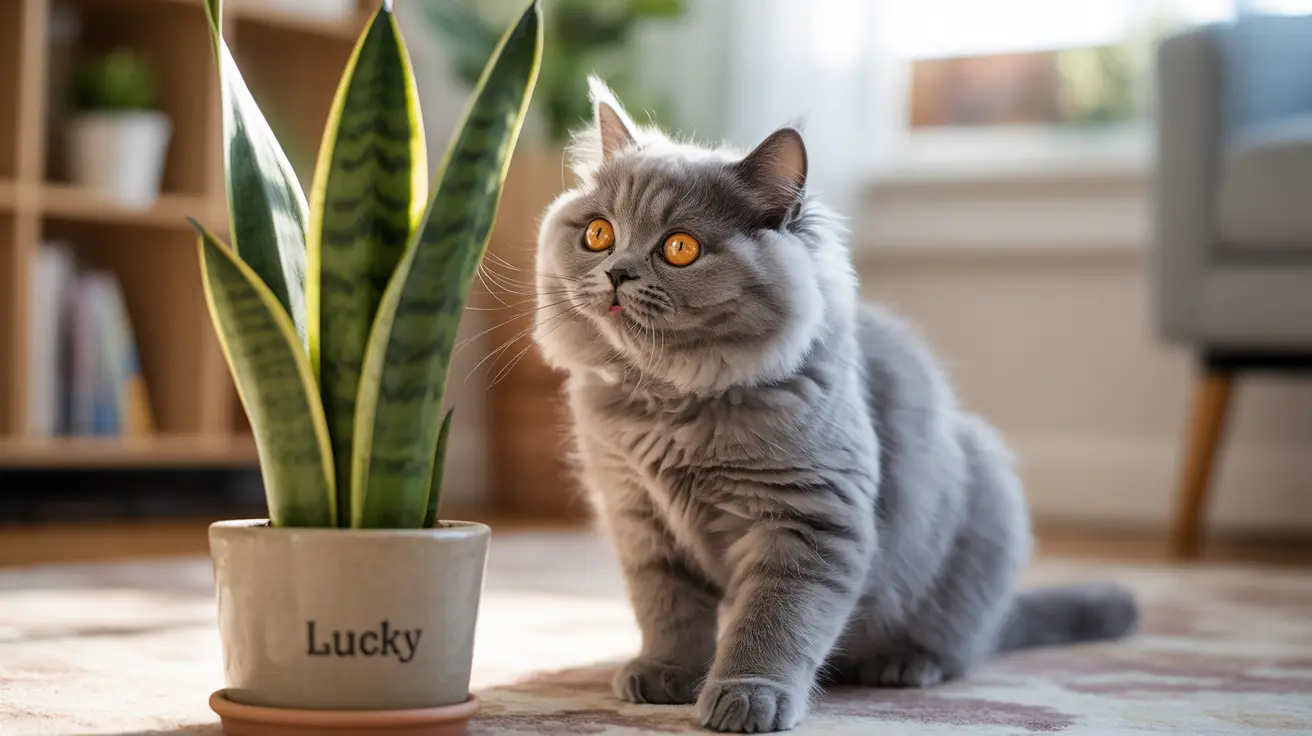If you're a cat owner who loves decorating with houseplants, you need to know about the potential dangers of snake plants (Sansevieria trifasciata) to your feline companion. While these popular houseplants are prized for their striking appearance and air-purifying qualities, they pose a genuine health risk to cats if ingested.
Understanding the toxicity of snake plants and recognizing the symptoms of poisoning can help you make informed decisions about your home's plant décor and ensure your cat's safety. Let's explore everything you need to know about snake plants and their effects on cats.
Understanding Snake Plant Toxicity
Snake plants contain saponins, natural compounds that protect the plant from fungi and pests but can be harmful to cats. These toxic substances are present throughout the entire plant - from leaves to roots. When a cat chews or ingests any part of a snake plant, these saponins can cause significant gastrointestinal distress.
While the bitter taste and sharp edges of snake plant leaves usually discourage cats from extensive consumption, even small amounts can trigger adverse reactions. The severity of poisoning typically depends on the amount ingested and the size of your cat.
Recognizing Symptoms of Snake Plant Poisoning
If your cat has consumed part of a snake plant, you may notice several symptoms within hours of ingestion:
- Excessive drooling
- Nausea and vomiting
- Diarrhea
- Loss of appetite
- Lethargy
- Swollen mouth or tongue
- Abdominal pain
Most cases of snake plant poisoning result in mild to moderate symptoms that resolve within 24-48 hours. However, monitoring your cat closely during this period is crucial.
Emergency Response and Treatment
If you suspect your cat has ingested a snake plant, take immediate action:
- Remove any plant material from your cat's mouth
- Document when and how much was consumed
- Contact your veterinarian or pet poison hotline
- Collect a sample of the plant for identification
- Monitor your cat's symptoms closely
Treatment typically focuses on supportive care, including fluid therapy to prevent dehydration and medication to control nausea and digestive issues. Most cats recover fully with prompt appropriate care.
Prevention and Safe Alternatives
The best approach to protecting your cat from snake plant toxicity is prevention:
- Place snake plants in areas your cat cannot access
- Consider hanging planters or high shelves
- Use deterrent sprays around plants
- Provide cat-safe alternatives like cat grass
- Choose pet-friendly plants for your home
Several attractive, non-toxic alternatives to snake plants include:
- Spider plants
- Boston ferns
- Areca palms
- Christmas cactus
- African violets
Frequently Asked Questions
Are snake plants toxic to cats, and what part of the plant is harmful?
Yes, snake plants are toxic to cats. All parts of the plant contain saponins, which are poisonous compounds that can cause gastrointestinal distress when ingested.
What symptoms should I watch for if my cat eats a snake plant?
Look for signs of drooling, vomiting, diarrhea, loss of appetite, lethargy, and abdominal discomfort. These symptoms typically appear within hours of ingestion.
How serious is snake plant poisoning in cats, and can it be fatal?
While snake plant poisoning is usually mild to moderate, rarely leading to fatality, it can cause significant discomfort. Severe cases are possible with large amounts of ingestion, particularly in smaller cats or kittens.
What immediate steps should I take if my cat ingests a snake plant?
Remove any remaining plant material from your cat's mouth, contact your veterinarian or animal poison control immediately, and monitor your cat's symptoms closely.
How can I prevent my cat from chewing on or eating snake plants safely?
Keep snake plants out of your cat's reach using high shelves or hanging planters, use pet deterrent sprays, and consider replacing them with cat-safe alternatives. Providing cat grass can also help satisfy your cat's plant-chewing instincts.
Conclusion
While snake plants are beautiful additions to any home, their toxicity to cats means pet owners must exercise caution. By understanding the risks, recognizing symptoms, and implementing preventive measures, you can maintain both an attractive home environment and your cat's safety. When in doubt, always opt for pet-friendly alternatives to ensure peace of mind.






